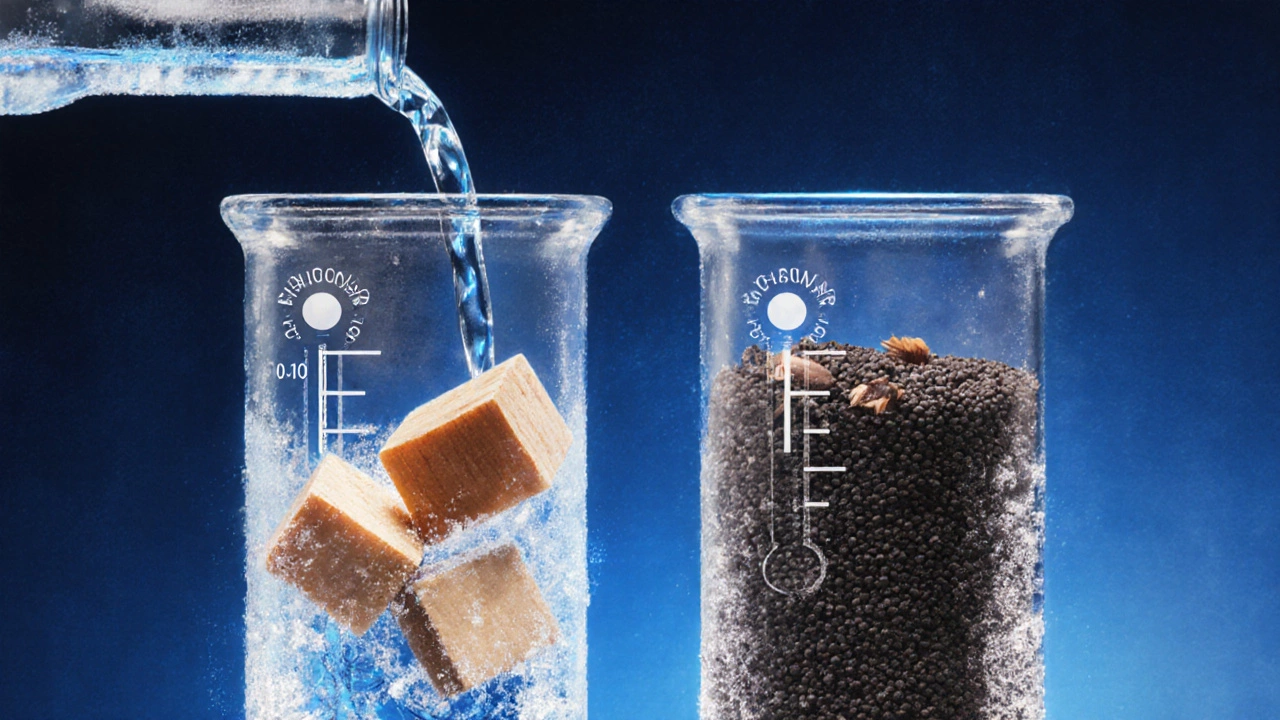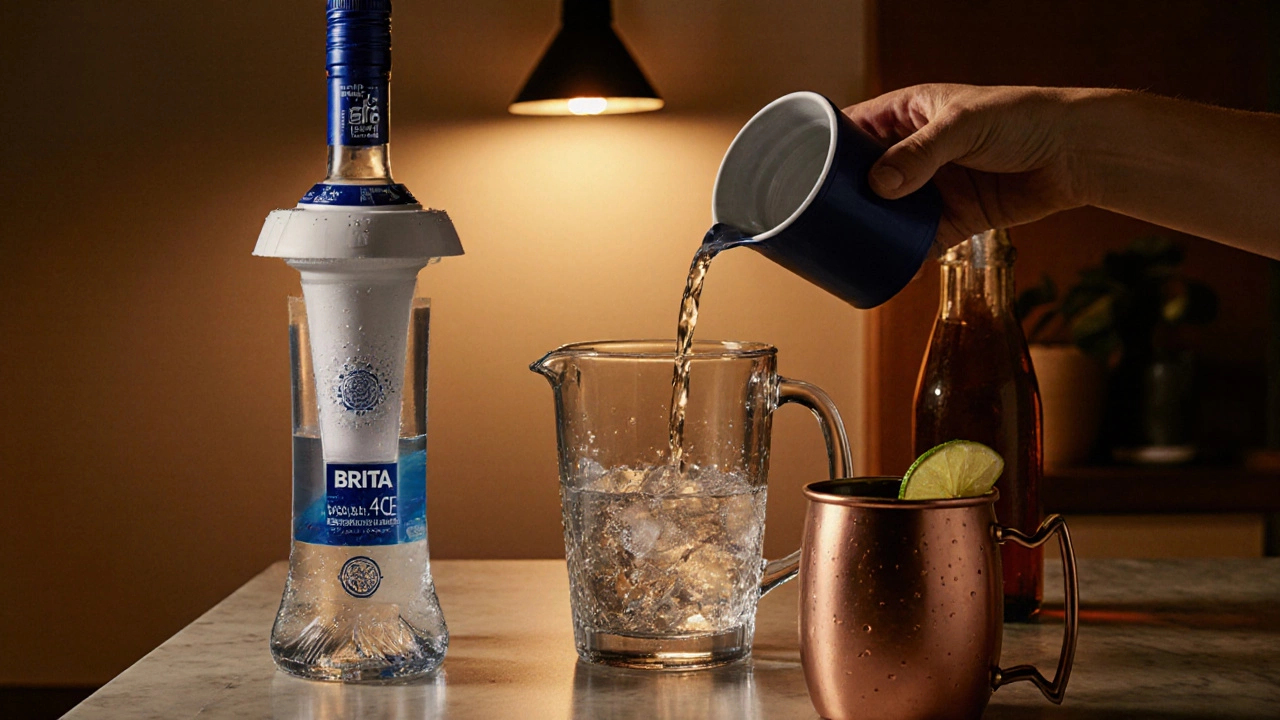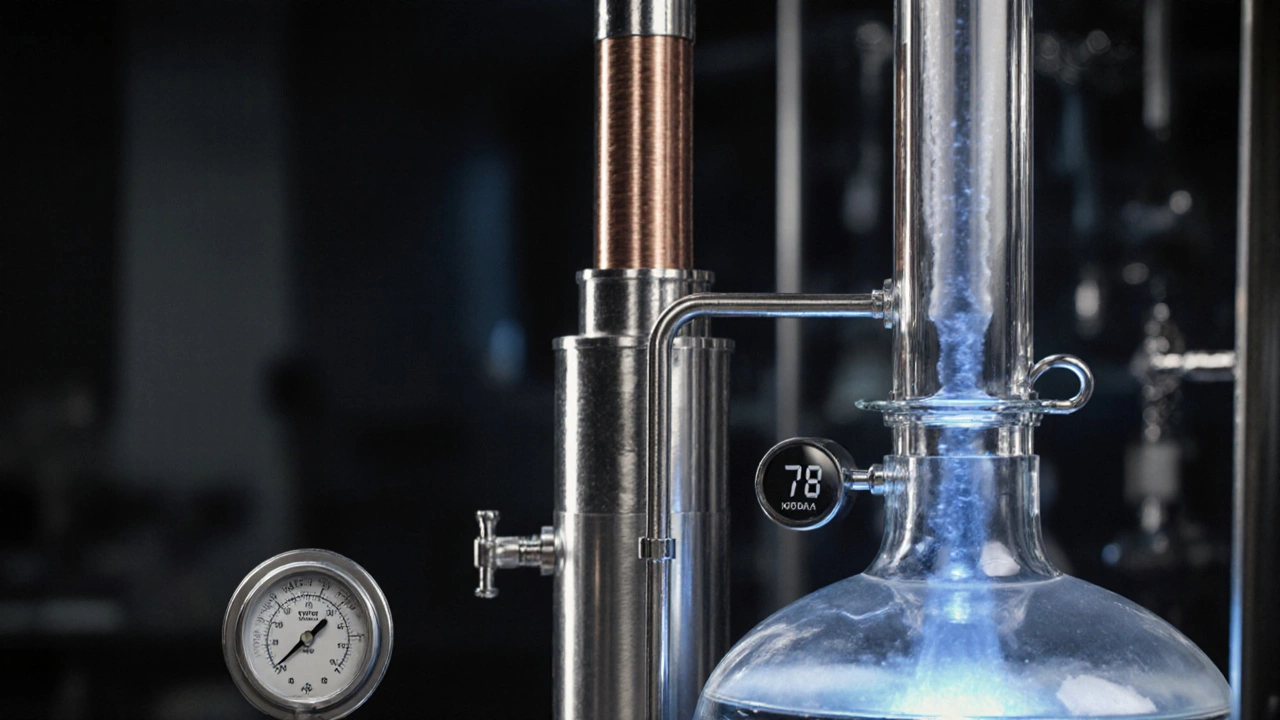Vodka Neutralization Calculator
Filtration Effectiveness Calculator
Ever wondered why some vodkas glide smooth while others leave a harsh bite? The secret lies in how the spirit is stripped of flavor‑bearing compounds. Below you’ll find everything you need to know to neutralize vodka taste, whether you’re a home enthusiast or a bar‑back looking for a cleaner base.
What makes vodka taste “neutral”?
Vodka is a distilled spirit that aims for a clean, almost odorless profile. In practice, it contains ethanol, water, and trace amounts of congeners - higher‑alcohol molecules that give off‑flavors like grainy, peppery or potato notes. The goal of neutralization is to remove as many of these congeners as possible while keeping the alcohol strength around 40% ABV.
Distillation: The First Line of Defense
Distillation separates ethanol from heavier compounds using a column still. Each additional pass cuts roughly 15‑20% of the remaining congeners. Industry standards vary:
- EU requires a minimum of two distillations.
- U.S. premium brands typically run three to six cycles.
Beyond the third run, the improvement drops to about 1‑2% but costs rise 25% per extra pass. That’s why most high‑end vodkas settle on three to four distillations - enough to push impurity removal into the low‑single digits.
Filtration - Where the Real Magic Happens
After distillation, filtration targets the remaining fusel oils and organic impurities. The most common media are forms of activated carbon, prized for its massive surface area (500‑1500 m²/g) and tiny pores (1‑100 nm). Two popular sources dominate the market:
- Birch charcoal - used by Grey Goose, offering 1200‑1500 m²/g and a subtle softening effect.
- Coconut shell carbon - favored by Tito’s, providing 900‑1100 m²/g and a slightly brighter mouthfeel.
Temperature matters, too. Filtration between 0‑10 °C maximizes adsorption; a 20 °C rise can shave 30‑40% off the carbon’s efficiency.
Comparing Popular Filtration Techniques
| Method | Typical removal % | Cost impact | Flavor side‑effects |
|---|---|---|---|
| Birch charcoal column | 70‑85 | Medium | Soft, slightly rounded |
| Coconut shell carbon column | 68‑82 | Medium | Bright, clean finish |
| Quartz sand | 45‑55 | Low | Mineral note, less smooth |
| Diamond‑crystal (luxury) | 90‑95 | High | Ultra‑neutral, costly |
| Home Brita filter (4 passes) | 65‑70 | Very low | Noticeable but acceptable for mixes |
Notice the trade‑off: higher removal rates usually come with steeper price tags. For most home bartenders, a good carbon column or a few Brita passes will be enough for mixed drinks.

Home Filtration Hacks That Actually Work
Standard kitchen filters can be a surprise ally. Here’s a step‑by‑step routine that many Reddit users swear by:
- Chill a bottle of 40% ABV vodka to 4 °C (39 °F).
- Pour the vodka slowly (≈1‑2 oz per minute) through a fresh Brita filter cartridge.
- Collect the filtered vodka in a clean glass.
- Repeat the process three more times for a total of four passes.
- Store the filtered spirit in a dark bottle, away from sunlight, and use within 30 days.
This method cuts roughly two‑thirds of the harsh congeners and brings a $12 bottle close to the smoothness of a $35 premium brand in a Moscow Mule.
Ingredient Choices - Starting with a Cleaner Base
Not all vodkas start from the same raw material. Potato vodka (e.g., Chopin) naturally contains 35‑40% fewer fusel oils than grain‑based spirits, but the starch remnants can require extra filtration to reach the same level of neutrality. Grain vodkas, on the other hand, bring more congeners but are easier to filter because the compounds are more volatile.
When you’re looking for a neutral base without heavy processing, a high‑quality potato vodka filtered once through activated carbon often outperforms a double‑distilled grain vodka that hasn’t been filtered.
Emerging Tech - Graphene & Enzymes
In 2023 Diageo launched a vodka featuring graphene‑enhanced carbon. The material claims 98% impurity removal, a 15% jump over traditional charcoal. Early lab tests show a smoother finish at lower cost per liter.
Researchers at UC Davis are testing enzymatic pretreatment that breaks down congeners before distillation. If successful, the method could shave 40% off energy consumption while keeping the spirit neutral. Keep an eye on future releases - they may become the new standard for eco‑conscious distilleries.

Practical Checklist - Neutralizing Vodka Taste
- Start with a vodka that’s already filtered or potato‑based for a head start.
- Aim for at least three distillation cycles; more yields diminishing returns.
- Choose a carbon source that matches your budget - birch for premium, coconut for mid‑range.
- Keep the spirit cold (0‑10 °C) during filtration to maximize adsorption.
- If using home filters, run four passes and replace cartridges after 4‑6 bottles.
- Store filtered vodka in a dark, airtight container; avoid light beyond 30 days.
Follow these steps and you’ll consistently get a smoother, more neutral spirit suitable for neat sipping or creative cocktails.
Common Mistakes to Avoid
Even seasoned mixers slip up. Here are the top three errors and how to fix them:
- Filtering at room temperature. Warm vodka reduces carbon’s grip on impurities by up to 35 %. Chill first.
- Using insufficient passes. Less than three passes leaves a noticeable bite. Four is the sweet spot for home filters.
- Storing in clear glass. Light degrades filtered vodka within weeks, re‑introducing off‑flavors. Switch to amber or opaque bottles.
When to Stop - Knowing Your Desired Neutrality
Neutral doesn’t mean flavorless. A perfectly neutral vodka should lack harshness but still retain a subtle mouthfeel. If you start tasting “plastic” or “over‑softened,” you’ve gone too far - the carbon is stripping away the spirit’s character. Taste after each filtration pass; stop when the edge softens but the base still feels lively.
Can I neutralize cheap vodka with just one filter?
One pass through a standard carbon filter will improve smoothness, but you’ll still detect a harsh after‑taste. For a noticeable change, aim for at least three to four passes.
Does the type of raw material (potato vs grain) matter once I filter?
Yes. Potato‑based vodkas start with fewer congeners, so they need less aggressive filtration. Grain‑based spirits benefit more from multiple carbon passes.
Is graphene‑enhanced carbon safe for home use?
Current commercial products use graphene only as a surface coating on traditional carbon. It’s considered food‑grade and safe, but the technology is still premium‑priced.
How long does filtered vodka stay neutral?
When stored in an amber bottle, away from heat and light, filtered vodka retains its smoothness for about a month. After that, oxidation can re‑introduce off‑flavors.
Do I need to chill vodka before distillation?
Distillation itself runs at high temperatures, so pre‑chilling isn’t required. However, chilling before filtration dramatically improves carbon efficiency.


